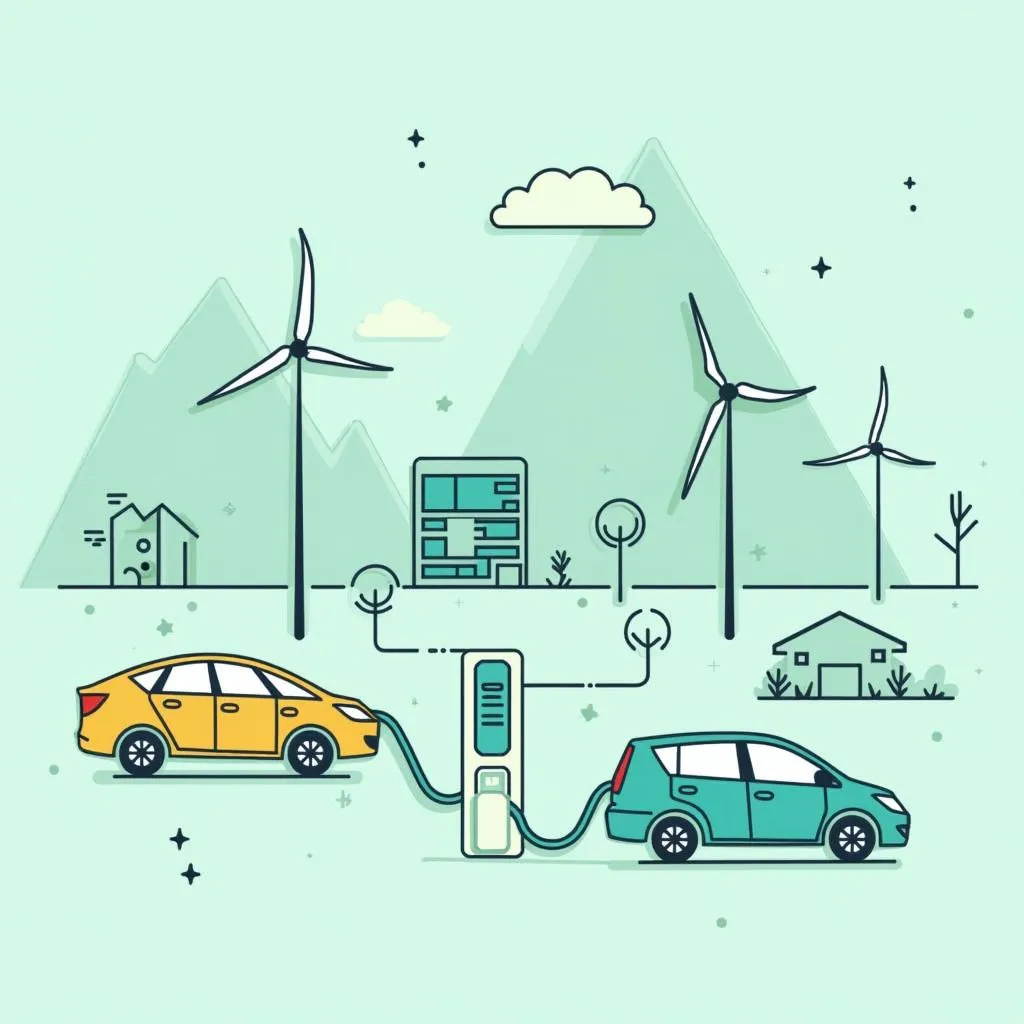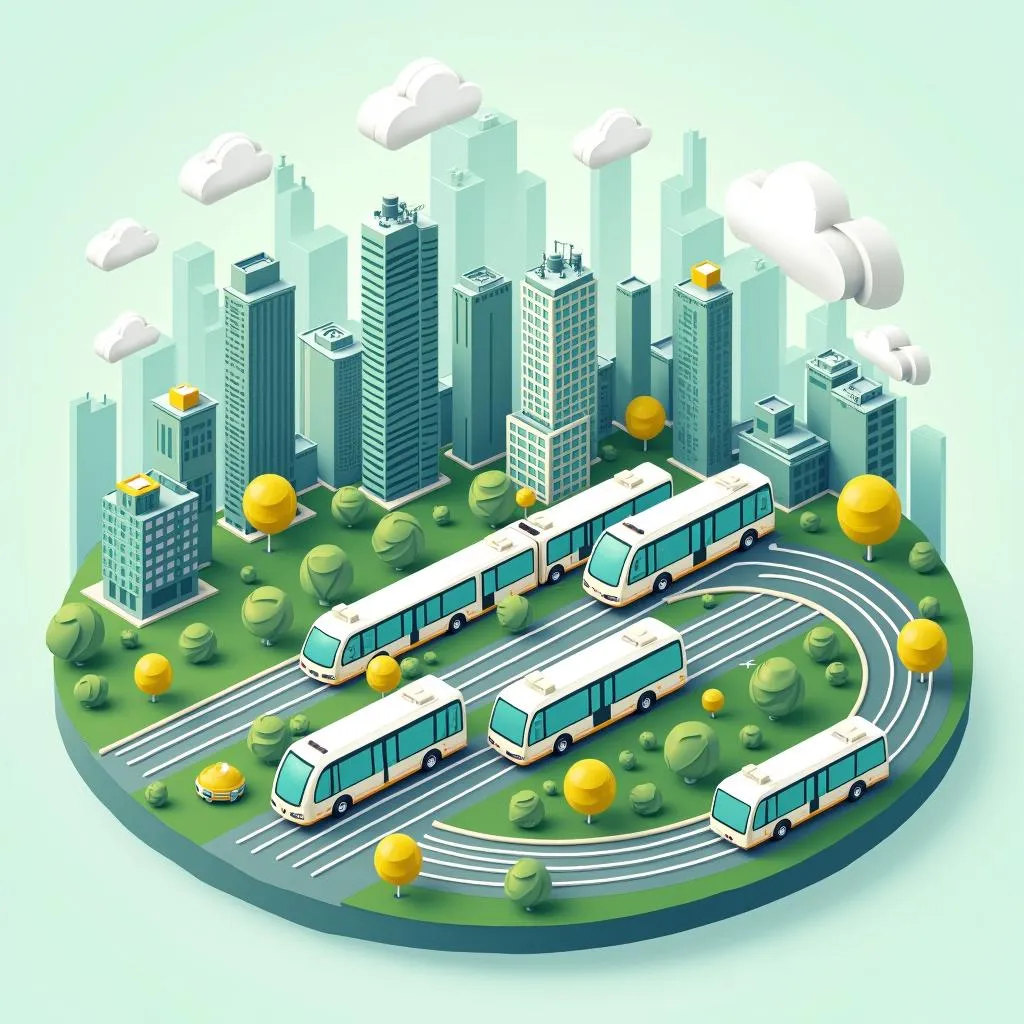In the PTE Academic exam, specifically the “Summarize Written Text” section in the Speaking & Writing section, you’ll often encounter topics that are topical and relevant, like Green Energy Solutions For Transportation. With climate concerns and the need for sustainable alternatives high on global agendas, it’s no surprise that candidates are required to demonstrate an understanding of this subject. This article provides realistic practice questions and model answers to help you ace this section.
Summarize Written Text Practice Questions
Below are sample test passages related to green energy in transportation. Each passage simulates real-world exam content and helps you practice your summarization skills. After reading each passage, write a one-sentence summary that conveys the key point of the text within a word limit of 5 to 75 words.
Practice Passage 1
As the world transitions towards renewable energy solutions, the role of transportation is critical in reducing emissions. Electric vehicles (EVs) powered by renewable energy sources such as wind and solar are gaining popularity. However, challenges such as limited charging infrastructure and high battery costs remain barriers to widespread adoption. Hydrogen fuel cells, an alternative energy source for transportation, offer a clean and sustainable option but also face challenges in terms of production and storage. To achieve carbon neutrality, a mix of green energy technologies will likely be needed to decarbonize the transportation sector.
Model Summaries by Band Score:
- Band 90: The adoption of green energy solutions, including electric vehicles and hydrogen fuel cells, is essential to reducing transportation emissions, although challenges such as infrastructure limitations and technology costs must be overcome to achieve carbon neutrality.
- Band 75: Green energy solutions like electric vehicles face challenges but are crucial for reducing emissions in transportation.
- Band 50: Electric vehicles and hydrogen fuel are helpful, but there are some problems.
Band Analysis:
- Content: The Band 90 response presents a complete and accurate summary of the challenges and solutions. Band 75 captures the primary idea but omits some complexity, while Band 50 is oversimplified and misses key nuances.
- Form: Each summary falls within the word limit, adhering to the requirement.
- Grammar, Vocabulary, and Spelling: The higher band scores use more precise and advanced vocabulary, making them more appropriate for higher scores.
 Electric vehicles face infrastructure and cost barriers in widespread adoption
Electric vehicles face infrastructure and cost barriers in widespread adoption
Practice Passage 2
Green energy technology in public transportation systems, including electric buses and rail solutions, continues to evolve. Many cities are introducing zero-emission public transport options as part of climate action plans. However, similar to private transportation, issues such as charging infrastructure, operational costs, and energy storage present ongoing obstacles. Smart city initiatives are also integrating renewable energy into public transport systems, improving efficiency and reducing emissions but at significant upfront investment.
Model Summaries by Band Score:
- Band 90: The integration of green energy into public transportation, including electric buses and smart city initiatives, is reducing emissions despite challenges with infrastructure, costs, and storage.
- Band 75: Electric buses and smart cities are reducing emissions, but infrastructure and costs are still issues.
- Band 50: Public transportation uses green energy, but it is still expensive.
Band Analysis:
- Content: Band 90 covers the complete integration and challenges, Band 75 touches on the key aspects but lacks depth, while Band 50 lacks specific detail about the nature of the challenges.
- Form: All answers remain within the word count.
- Grammar, Vocabulary: Higher band responses demonstrate better control over grammar and varied vocabulary.
 Smart city initiatives integrating green energy reduce emissions but face financial challenges
Smart city initiatives integrating green energy reduce emissions but face financial challenges
For more comprehensive readings on emerging technologies in transportation, explore our detailed articles on Hydrogen fuel cells and transportation and Zero-emission transport solutions.
Practice Passage 3
One of the major discussions surrounding green energy for transportation is the future role of energy storage. Current battery technology, while improving, still faces issues with efficiency, longevity, and cost. Research is ongoing into potential breakthroughs such as solid-state batteries, which promise higher energy density and faster charging times, but significant challenges remain. For green transportation to become fully viable, innovations in battery storage are crucial.
Model Summaries by Band Score:
- Band 90: Future energy storage innovations, particularly in solid-state batteries, are vital to improving green transportation, although current challenges with battery efficiency, cost, and longevity impede progress.
- Band 75: Battery technology faces issues with efficiency and cost, but future innovations are key to green transportation.
- Band 50: Battery storage is important for green transportation but has problems.
Band Analysis:
- Content: Band 90 offers a concise yet comprehensive summary while Band 75 touches essential points, and Band 50 is too vague.
- Form: All models meet the required word count.
- Grammar, Vocabulary: Higher bands show more advanced vocabulary and grammatical diversity (e.g., “impede progress”).
 Solid-state batteries promise better energy storage for future transportation
Solid-state batteries promise better energy storage for future transportation
Additional details on developments can be found in our guide to the Future of renewable energy storage to understand this growing field better.
Vocabulary and Grammar
Below are some keywords and phrases from the passages, along with their explanations and examples:
-
Decarbonize /diˈkɑr.bə.naɪz/ (v): Remove carbon dioxide emissions.
- The government aims to decarbonize the national rail system by 2030.
-
Sustainable /səˈsteɪ.nə.bəl/ (adj): Capable of being maintained or continued with minimal impact on the environment.
- Sustainable transport solutions are key to battling climate change.
-
Infrastructure /ˈɪn.frəˌstrʌk.tʃər/ (n): The system of public works in a country, like transportation systems or power plants.
- Developing electric vehicle infrastructure is essential for widespread adoption.
-
Carbon neutrality /ˈkɑr.bən nuˈtræl.ə.ti/: Achieving a balance between emitting and absorbing carbon.
- Policies are aiming for carbon neutrality by 2050.
-
Emission /ɪˈmɪʃ.ən/ (n): The discharge of substances into the air, usually from vehicles or industrial activities.
- Reducing vehicle emissions is critical for improving air quality.
-
Smart city /smɑːrt sɪti/: An urban area that uses technology to increase operational efficiency and enhance services and quality of life.
- Smart city initiatives are improving transportation with renewable energy.
-
Energy density /ˈɛn.ər.dʒi ˈdɛn.sɪ.ti/: The amount of energy stored in a given system.
- Solid-state batteries offer higher energy density than traditional ones.
-
Breakthrough /ˈbreɪk.θruː/ (n): A major progress or discovery, especially in science or technology.
- A breakthrough in battery technology could revolutionize transportation.
-
Longevity /lɑːnˈdʒev.ə.ti/ (n): The ability to last for a long time.
- Battery longevity is crucial for electric vehicle efficiency.
-
Operational costs /ˌɒp.əˈreɪ.ʃən.əl kɒsts/: Expenses associated with running a business or system.
- The operational costs of maintaining electric buses can be high initially.
For insights into how public transportation fits into these broader changes, check out our analysis of Public transportation in smart cities.
Conclusion
Summarizing written texts in the PTE Exam requires practice and attention to detail, especially when dealing with complex topics like green energy solutions for transportation. By refining your ability to extract the most essential ideas and craft precise summaries, you’ll improve your score significantly in this section.